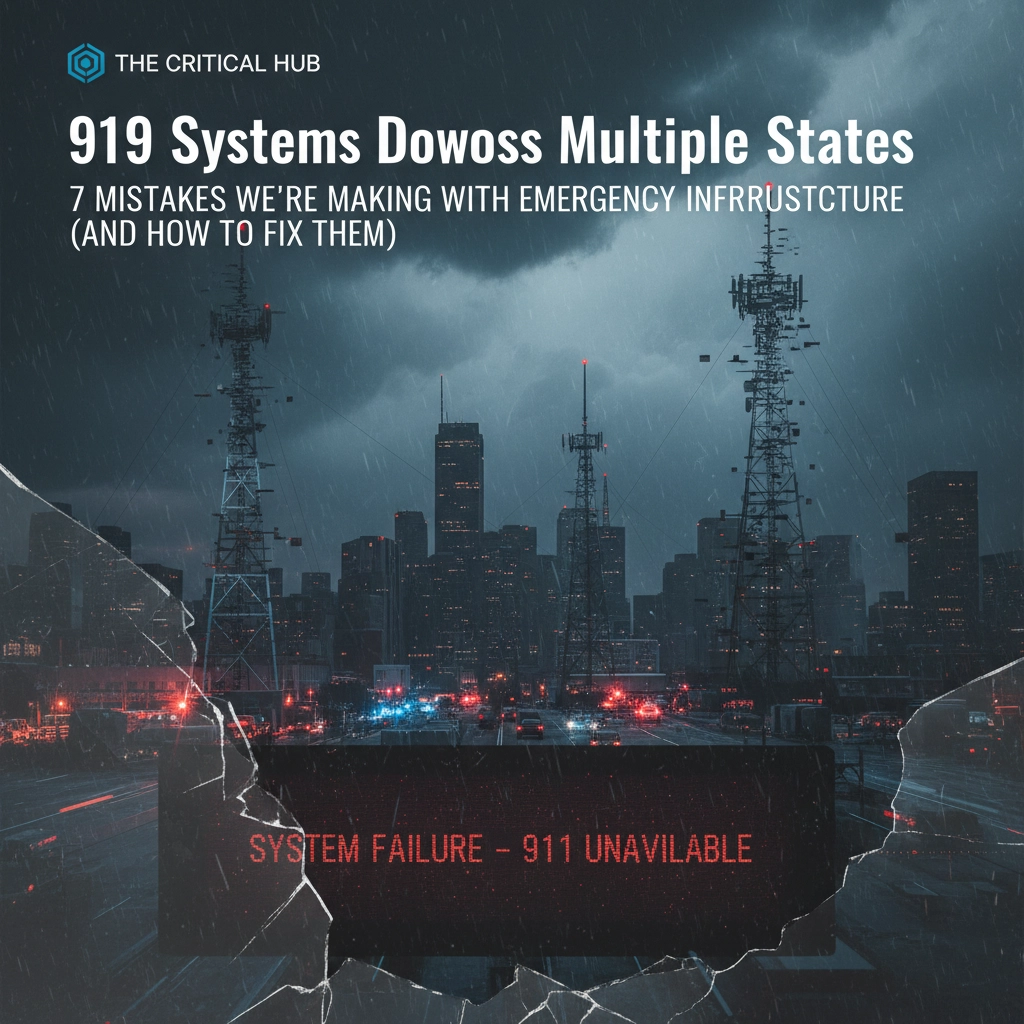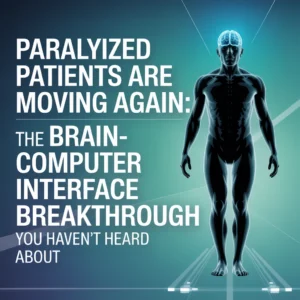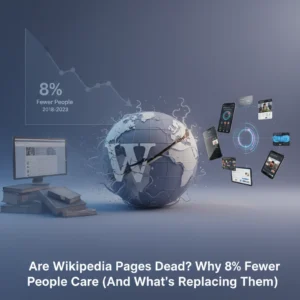Imagine calling 911 during an emergency and getting… nothing. Dead silence. That nightmare became reality for millions across Louisiana and Mississippi last Thursday when fiber cuts knocked out emergency services for hours.
This wasn't some sci-fi disaster movie. Real people couldn't reach help when they needed it most. And it's happening way more often than you'd think.
Why Our 911 System Is Basically Held Together with Digital Duct Tape
The recent outage started with "a series of fiber cuts" in Mississippi that somehow managed to take down emergency services across two entire states. Governor Tate Reeves confirmed what emergency officials had feared for years – our 911 infrastructure is way more fragile than anyone wants to admit.
Here's the scary part: this wasn't even a cyberattack or natural disaster. Just some damaged cables, and boom – millions of people lost their lifeline to emergency services.
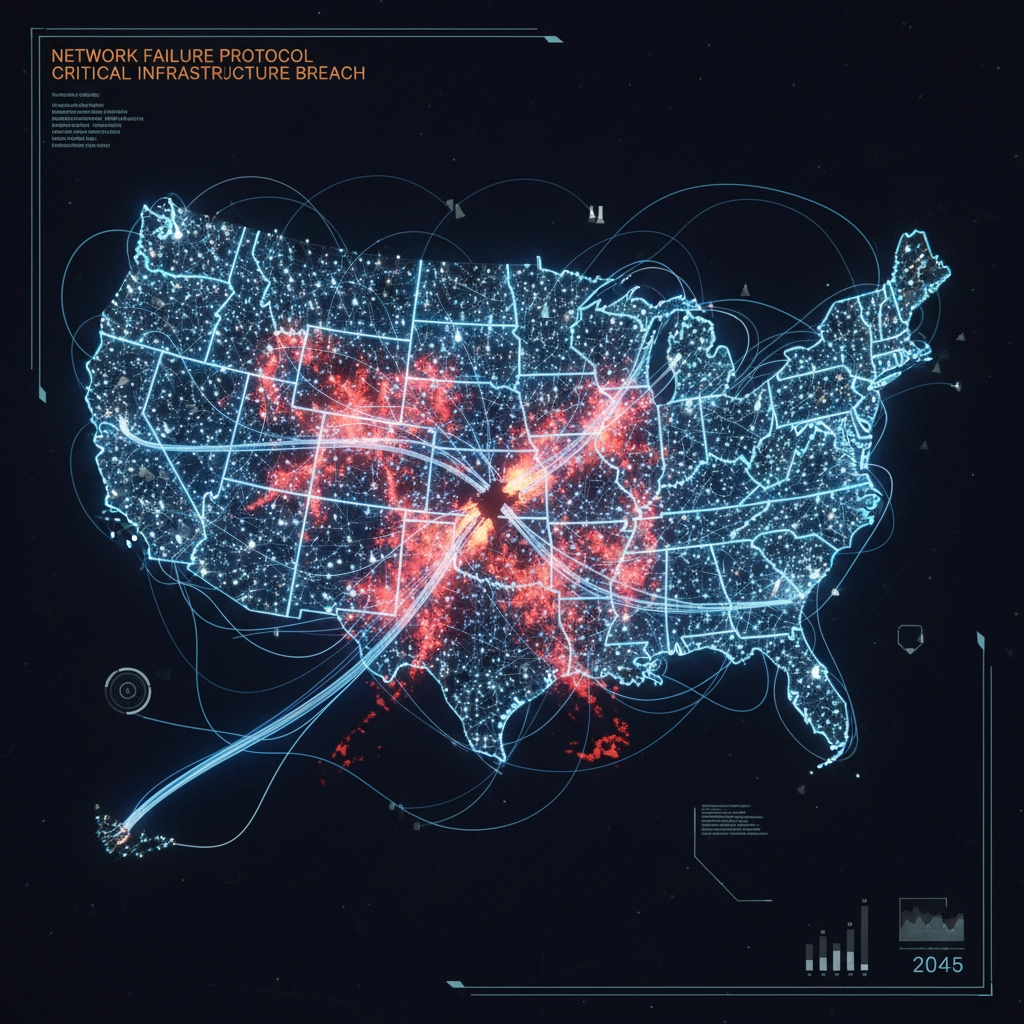
Meanwhile, Verizon customers in Florida counties are dealing with their own 911 connectivity issues. It's like watching dominoes fall, except each domino represents someone who might not be able to call for help.
The 7 Big Mistakes We Keep Making (And Why They're So Dangerous)
Mistake #1: Putting All Our Eggs in One Digital Basket
Remember when the internet went down and you couldn't work for a day? Now imagine that, but with 911 systems. That's essentially what happened when those Mississippi fiber cuts rippled across state lines.
We've built our emergency systems like a house of cards – knock out one major fiber line and everything tumbles down. It's 2025, and we're still acting like redundancy is optional.
Mistake #2: Treating Cybersecurity Like an Afterthought
Next Generation 911 systems are basically fancy internet networks now. They handle voice, data, videos – everything flows through IP networks that hackers absolutely love to target.
But here's the kicker: many emergency centers are running these internet-connected systems with cybersecurity that'd make your grandmother's laptop look secure.
Mistake #3: Refusing to Let Go of Ancient Technology
Some 911 centers are still running on systems that were cutting-edge when flip phones were cool. These dinosaur systems can't talk to modern emergency tech and have security holes you could drive a truck through.
It's like trying to stream Netflix on a dial-up modem – technically possible, but you're gonna have a bad time.
Mistake #4: Skipping the Backup Plan
When systems fail (and they will), many emergency centers discover their backup plan is basically "hope it fixes itself." No diverse routing, no redundant power systems, no real plan B.
The Seminole County incident perfectly shows this problem – when Verizon customers couldn't connect to 911, there wasn't a smooth failover to other carriers.
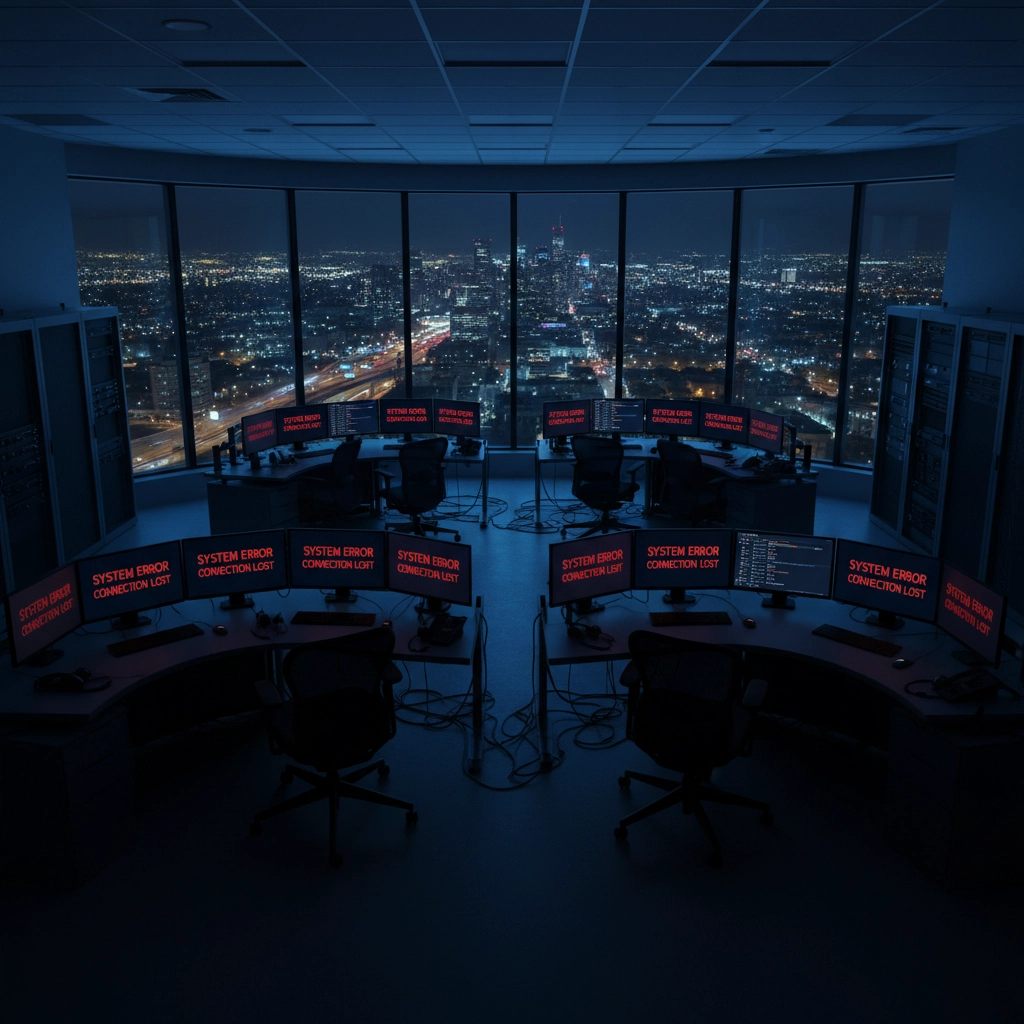
Mistake #5: Playing Favorites with Phone Companies
Depending too heavily on one telecommunications provider is like having only one key to your house. When that provider has issues, you're locked out.
The Florida Verizon situation is a perfect example – why should your ability to call 911 depend on which phone company you chose?
Mistake #6: Winging It on Security Policies
Many emergency centers operate with what experts politely call "ad hoc or non-existent security policies." Translation: they're making it up as they go along.
No proper training, no clear procedures, no real plan for when things go sideways. It's like having security guards who've never been told what they're supposed to be guarding.
Mistake #7: Letting Call Volume Crush the System
During emergencies, 911 systems get flooded with calls. But instead of smart routing or AI help, most centers just… let the phones ring endlessly.
People calling about genuine emergencies get busy signals while others tie up lines asking about power outages that aren't life-threatening.
How to Actually Fix This Mess (Without Breaking the Bank)
Build Real Redundancy
Emergency services need multiple pathways – different fiber routes, satellite backups, cross-state agreements. The recent Mississippi-Louisiana outage could've been a minor blip instead of a major crisis with proper geographic diversity.
Think of it like having multiple routes to work. When one road's blocked, you take another.
Get Serious About Cybersecurity
NG911 systems need the same security attention as banks or hospitals. Regular threat assessments, employee training, network segmentation, encryption – the whole nine yards.
It's not sexy, but neither is explaining to families why hackers took down emergency services.
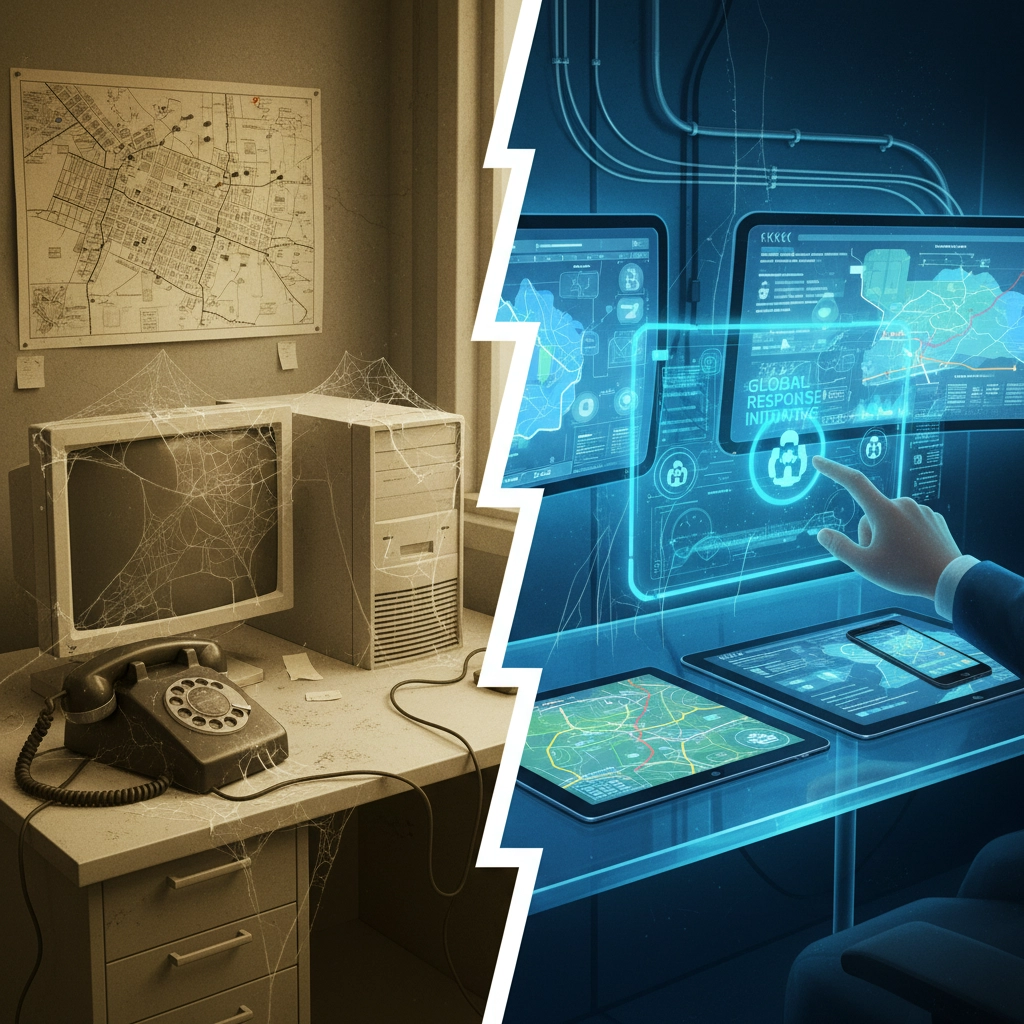
Embrace Smart Technology
AI isn't just for chatbots and social media. Emergency services using AI for call management report 30% fewer non-emergency calls clogging the system.
One center handled 2,920 non-emergency calls automatically out of 9,635 total calls in a single month. That's thousands of lines freed up for real emergencies.
Create Multi-Carrier Networks
Emergency services should work with multiple phone companies, not just one. Automatic failover systems can switch between carriers seamlessly when one has problems.
Your ability to call 911 shouldn't depend on your wireless plan.
Real Talk: This Happened to Someone Just Like You
Sarah from Baton Rouge found out about Thursday's outage the hard way. Her elderly neighbor fell, and when she dialed 911, nothing happened. No ring, no busy signal, just dead air.
She ended up driving to the nearest fire station – luckily just a few blocks away. But what if it had been farther? What if she didn't have a car? What if her neighbor's condition was more serious?
The fire chief told her they'd gotten dozens of walk-ins that day from people who couldn't get through to 911. Real emergencies, real people, real problems that our "modern" system completely failed to handle.
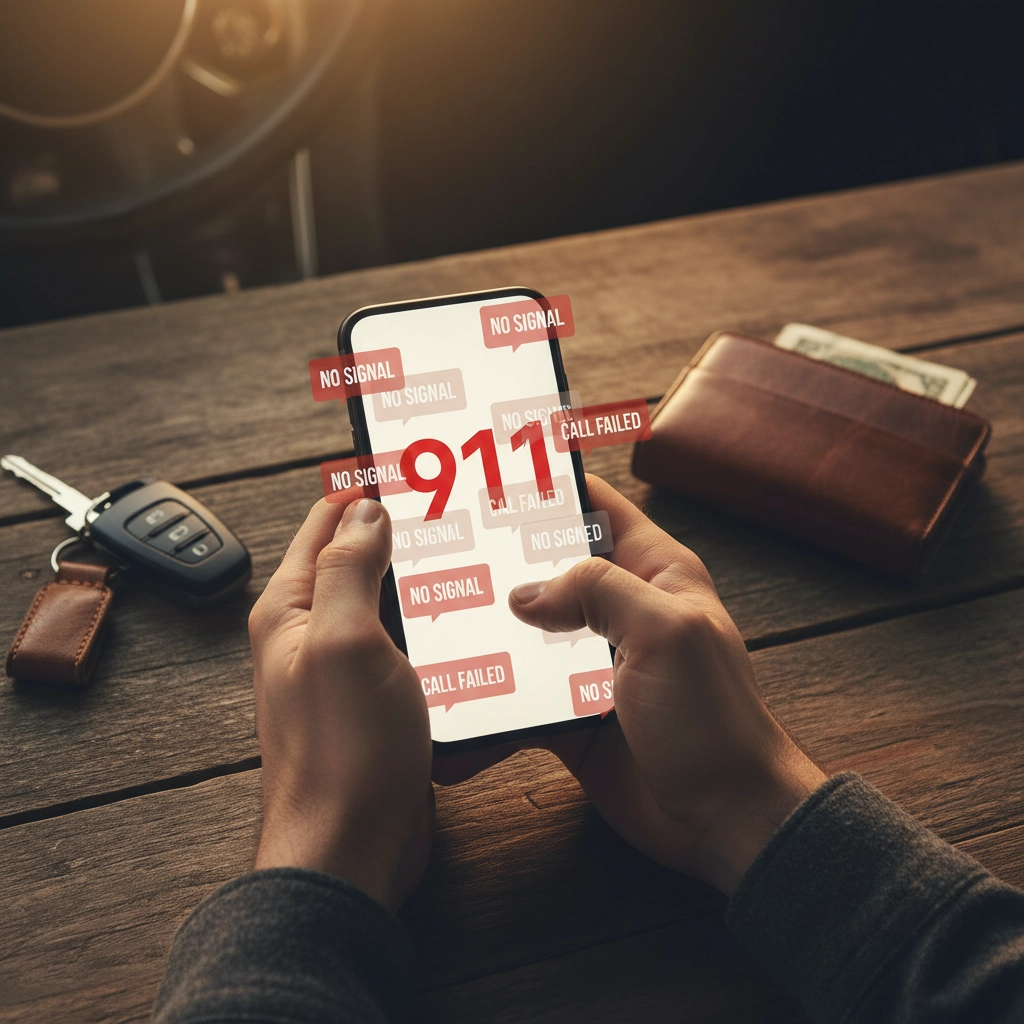
The Bottom Line: We Can Do Better
The recent outages aren't isolated incidents – they're warning shots. Our emergency infrastructure is held together with digital duct tape and wishful thinking.
But here's the good news: we know exactly what's wrong and how to fix it. Geographic diversity, real cybersecurity, modern systems, smart call routing, multi-carrier redundancy – none of this is rocket science.
The technology exists. The solutions are proven. What we need is the will to actually implement them before the next "impossible" outage happens.
Because next time, it might not be fiber cuts in Mississippi. It could be a cyber attack, a natural disaster, or just another "one in a million" failure that somehow keeps happening every few months.
What's it going to take for us to actually prioritize the systems that people depend on when everything else goes wrong?

